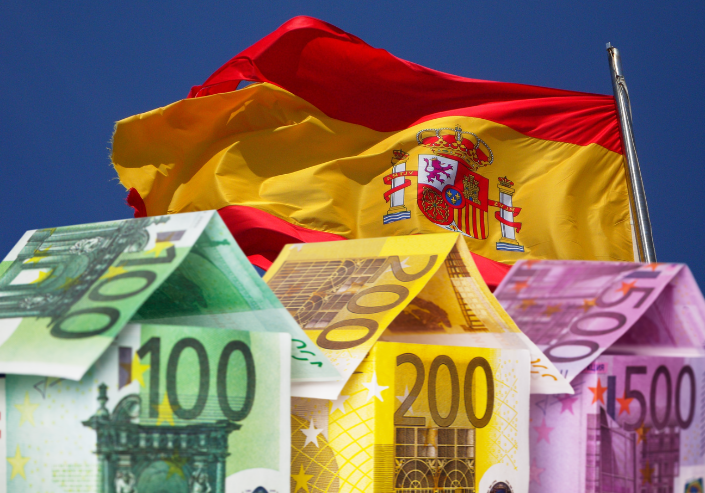Spanish Property Prices Still Up!
What's preventing property prices in Spain from decreasing like in other parts of Europe?
Amidst a backdrop of declining property values in the UK, Germany, and various other European nations, Spain’s real estate market stands out as a beacon of resilience and growth. While many parts of Europe witness a notable decrease in property prices, the UK experiences its most substantial drop in 14 years, and Germany records its largest year-on-year decline since 2000. Austria, Denmark, and Sweden are also facing significant downturns, with property prices in each nation seeing noteworthy reductions.
In contrast, recent Eurostat data, as reported by the Spanish press for the second quarter of 2023, reveals a 1.7 percent year-on-year decrease in housing prices across neighbouring European countries. In a remarkable departure from this trend, Spain demonstrates an impressive 3.7 percent increase, underlining its resilience in the face of broader market fluctuations.
In a striking contrast, Spain’s housing market witnessed a notable surge of 2.1 percent in September, eclipsing the modest 0.1 percent growth seen across the average of Eurozone nations. Notably, a total of nine EU countries reported diminished prices in the second quarter of 2023 compared to the preceding year. This further underscores Spain’s resilience and robust performance in the face of broader European market dynamics.
In Spain, property prices rose by more than 6 percent in the first half of the year

The surge in property prices in Spain can be attributed primarily to a pronounced shortage in supply. While the increase in interest rates has introduced some rigidity to property market accessibility and tempered demand to a certain extent, the available supply remains inadequate for prospective buyers. ING Economics aptly notes that supply growth has been lagging behind demand for several years.
Consequently, the combined impact of escalating prices and the rise in mortgage interest rates has led to a discernible decline in mortgage signings (down by -18.8 percent) and home sales (down by 10.5 percent) over the past six months, as per data from Spain’s National Institute of Statistics (INE). It is noteworthy, however, that these declines are comparatively milder than those observed in other countries. Notably, there has been an uptick in the number of individuals purchasing property in Spain through cash transactions.
Foreign buyers
A significant proportion of these cash transactions are attributed to foreign buyers. The post-pandemic period has witnessed a notable surge in foreign buyers entering the Spanish market, further intensifying demand and propelling prices upwards. This phenomenon is particularly prominent in the well-trodden tourist havens that are favored by international visitors, including the coastal regions of the Mediterranean, the Balearic Islands, and the Canary Islands.
Leveraging favorable visa regulations, recent data indicates a substantial uptick in the number of Americans flocking to Spain for property purchases, registering an impressive surge of nearly 37 percent.
Indeed, foreigners play an additional pivotal role in the market dynamics. The prevalence of tourist rentals, often facilitated by non-resident property owners, exerts further upward pressure on prices. The robust resurgence of the Spanish tourism sector in the wake of the pandemic has prompted numerous homeowners to leverage their properties for short-term tourist accommodations. This practice, while bolstering the tourism industry, exacerbates the scarcity of available housing for long-term residents, thereby contributing to the overall supply constraint in the market.

European bubbles
Indeed, experts scrutinizing real estate trends across Europe highlight the presence of self-correcting property bubbles in various European cities—a dynamic not applicable to the Spanish market. José María Basáñez, President of the appraisal firm Tecnitasa, concurs, emphasizing that “the housing prices in several European countries are undergoing a corrective phase, particularly in those nations where the surge in prices in recent years exceeded that of Spain by a considerable margin.”
In essence, this signifies that in numerous other European metropolises, property values experienced substantial growth in the aftermath of the financial crisis—often surpassing the increases observed in Spain—resulting in localized property bubbles. It is only natural for these markets to now undergo a self-corrective phase, particularly in light of broader economic pressures.
Growing number of households
Additionally, experts highlight that the net growth of households in Spain, fueled in part by immigration, far outstrips the net expansion of housing supply. This exacerbates the shortage of available housing stock, consequently exerting even more upward pressure on property prices.
Spanish economy
Spain’s commendable economic performance has undoubtedly been a driving force behind the surge in property prices. The robust economic growth, surpassing that of many of its European counterparts, has provided a solid foundation for the property market. Projections from the Bank of Spain further underscore this strength, anticipating a notable 2.3 percent expansion of the Spanish economy in 2023, a stark contrast to the average growth of 0.5 percent projected for the Eurozone as a whole. This reinforces Spain’s position as an economic stronghold within the region.

Pandemic prices
Spain’s property market exhibited a remarkable resilience during the pandemic, maintaining a comparatively steadier trajectory than its European counterparts. According to the Spanish outlet El Economista, the market in Spain experienced less of an ‘overheating’ phenomenon, which likely contributed to a more measured deceleration when compared to countries where the market was more inflated during this period.
The European Central Bank (ECB) estimates that the overvaluation in the Spanish property market stands at 10.3 percent, notably lower than the average of 12.8 percent seen in most other Eurozone economies. For context, the overvaluation estimation is 19.8 percent in the Netherlands and 14.8 percent in Germany. This underscores that, akin to the self-correction of post-crash price inflation, the Spanish property market has fewer price surges to recalibrate.














